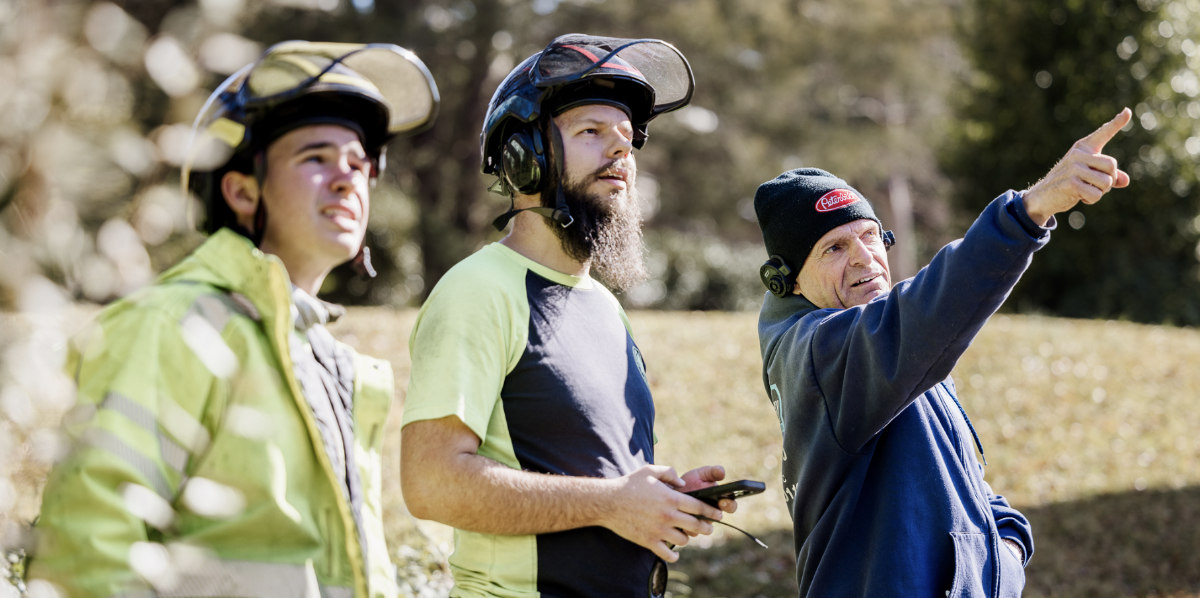You wake up to a tree across your driveway after a spring storm. It’s a costly, inconvenient, and possibly dangerous problem to deal with. But could it have been prevented? Understanding the warning signs and taking proactive steps can help you avoid such headaches, saving you time and money down the road.
Here’s how to avoid potential tree issues and protect your home and loved ones.
Monitoring Tree Health: Prevent Tree Damage Before the Next Storm
Like any living thing, trees need attention and care. The key is catching potential problems early before they turn into full-blown dangers. Regular inspections matter. It’s a good idea to walk around your property every season and check on your trees.
Warning signs of a problem tree:
- Cracks in the trunk or major branches
- A sudden or worsening lean
- Hollow or soft spots in the trunk
- Dead branches or limbs falling unexpectedly
- Fungal growth around the base (a sign of internal decay)
If you spot any of these warning signs, it’s time to get an expert opinion. An arborist can assess the risk and help you decide whether trimming or full removal is needed.
Removing Dead or Dying Trees: Why Early Action is Safer and Cheaper
It’s easy to ignore a tree that “looks fine” from a distance. But if a tree is already dead or dying, it’s only a matter of time before it becomes a problem.
Dead trees are unpredictable. They may stand tall for months or even years, only to suddenly drop limbs—or fall entirely—without warning. Storms make things worse. High winds and heavy rain can take down a weak tree in seconds, causing major property damage. Early removal is safer and more cost-effective. Waiting until after a tree falls often means dealing with more than just removal—you may have to pay for repairs, debris cleanup, and, in some cases, insurance disputes.
How to identify a dead tree:
- No leaves during the growing season
- Brittle branches that snap easily
- Peeling bark or deep cracks in the trunk
If you have a tree that’s showing signs of decay, don’t put off dealing with it. A professional can determine whether it needs pruning or full removal before it becomes a serious hazard.

Protecting Your Home: Assessing Trees Near Structures
Even healthy trees can cause damage if they’re too close to your home, garage, or power lines. Strong winds can break off large branches, while heavy rain can weaken roots, causing trees to topple.
Look for these red flags:
- Branches hanging over your roof
- Trees leaning toward your home
- Roots growing too close to your foundation
What you can do:
- Trim back branches before they become a threat
- Remove trees that are too close to your home or show signs of instability
- Schedule routine pruning to reduce wind resistance and keep trees strong
Quick Tree Health Checklist
- Leaning tree with exposed roots
- Dead or fallen branches
- Cracks in the trunk
- Mushrooms or fungal growth at the base
- Sparse foliage during the growing season
Insurance Considerations: What You Need to Know
While every homeowner’s insurance policy is different, one thing is consistent: preventative maintenance matters. Insurance may not cover damage from a neglected tree. If a tree was clearly dead or at risk before a storm, coverage could be denied. Be proactive. Keeping records of tree maintenance and hiring a professional to assess potential hazards can help you avoid problems later. Documentation is key. Taking photos of your trees before and after pruning or removal can serve as proof that you took the necessary precautions.
The bottom line? Keeping your trees in check isn’t just good for safety—it can also help avoid complications if you ever need to file a claim.
Proactive Tree Care: A Smart Investment in Safety
Caring for your trees doesn’t have to be overwhelming. A few small steps can make a huge difference:
Hire a certified arborist for annual tree inspections. Catching issues early can save you thousands in the long run. Keep trees healthy. Proper watering, fertilization, and disease prevention keep trees strong and less likely to fall in a storm. Know who to call before an emergency happens. Have a trusted tree service’s number saved so you’re not scrambling after a storm.
Final Thoughts: Don't Wait for the Next Storm to Act
Being proactive with tree care means fewer surprises, lower costs, and a safer property. Don’t wait until you’re dealing with storm damage—take steps now to protect your home and trees.
If you’re unsure about the health of your trees or need help with pruning or removal, Greenville Tree Co. is here to help. Don’t wait until a storm strikes. Get a free estimate or call us today for a professional assessment and a proactive tree care plan tailored to your property.